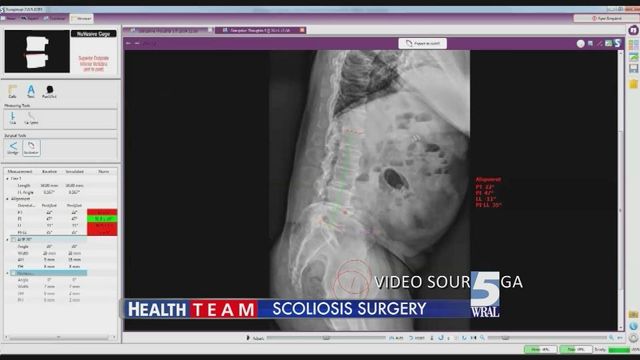New surgical approach available for scoliosis patients
Scoliosis is a sideways curvature of the spine that develops in a small percentage of children after age 10, mostly in girls.
Posted — UpdatedCases range from mild to severe and may get worse in adulthood. Another type occurs only in adults as a result of degenerative spinal disease.
Stephanie Parrish’s scoliosis didn’t develop in childhood; it was the result of a degenerate process in the spine that began to cause pain five years ago.
“It was pain that was just intense and unbearable. The quality of my life was about zero,” Parrish said.
Conservative treatments, like physical therapy and epidural injections, weren’t sufficient, so Parrish went to Duke neurosurgeon Dr. Isaac Karikari for a new surgical approach to decompress, stabilize and align her spine.
“Her spine essentially rotated and twisted around to the point where her ribs are almost rubbing again her iliac,” Karikari said.
Imaging, combined with special computer software called IGA, creates a definitive surgical plan and predicts what the spine will look like after surgery.
The software makes decisions about how much bone to remove from the vertebra, where to place implants, as well as the screws and rods that fuse the spine in the best position.
“This really eliminates a lot of the guessing aspect of surgery, which is what we’ve relied on for many years,” Karikari said.
WRAL Heath Team expert Dr. Allen Mask says the vast majority of adults with degenerative spinal disease that cause scoliosis respond well to non-surgical first-line treatments.
• Credits
Copyright 2024 by Capitol Broadcasting Company. All rights reserved. This material may not be published, broadcast, rewritten or redistributed.





